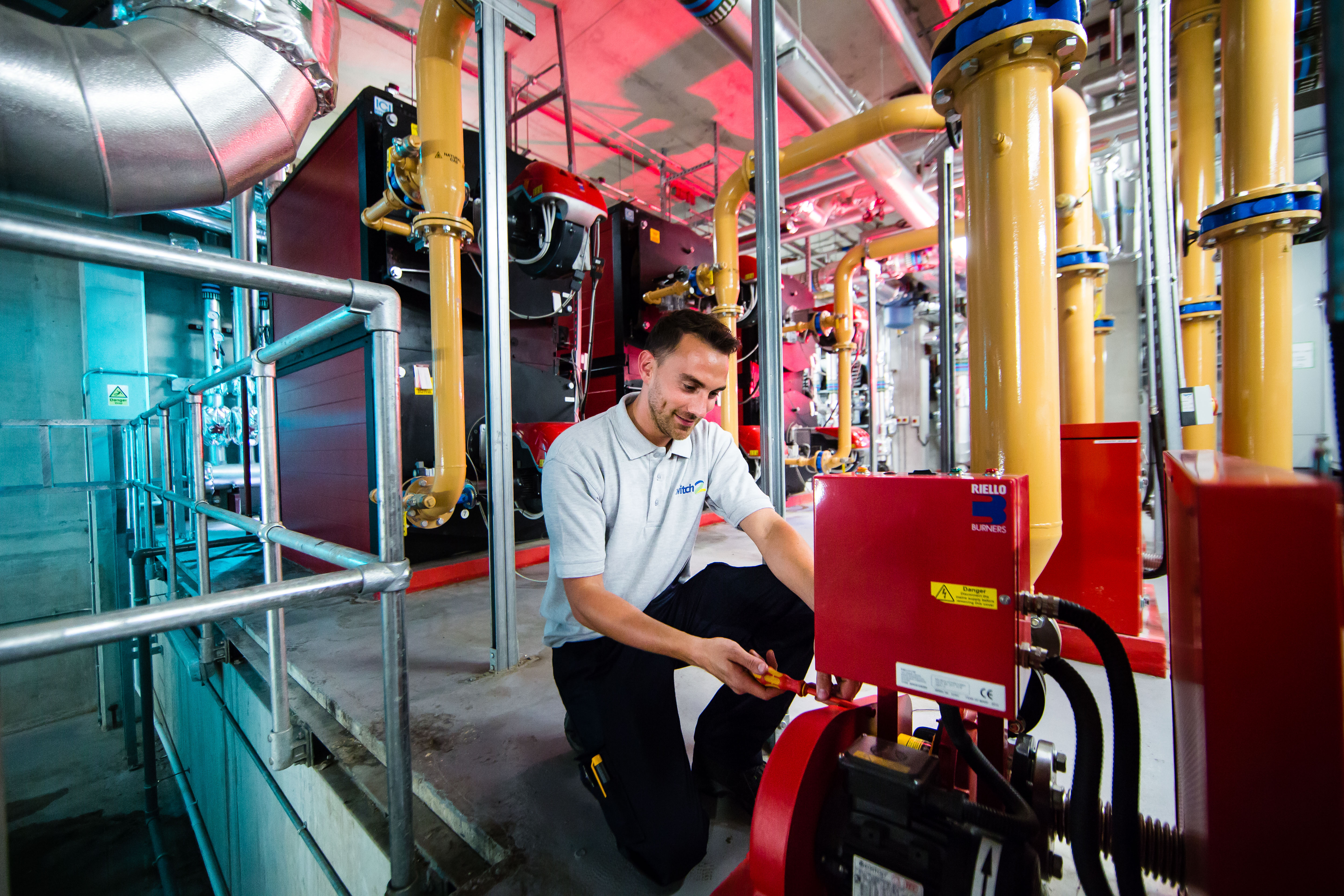Ian Allan, Head of Market Strategy for Switch2 Energy, explains how next generation heat networks can help drive the urgent heat decarbonisation challenge.
There’s no ‘silver bullet’ solution to the urgent and complex heat decarbonisation challenge, but heat networks will play an increasingly important role in the sustainable heating mix – helping to deliver on net zero goals.
The UK government intends to provide at least 18% of heat demand from heat networks by 2050, up from 2% today. District and community heating is also central to the proposed Future Homes Standard. As a proven, mature technology, heat networks can be deployed now to decarbonise homes and businesses where there is a dense heat requirement.
Recycling waste heat
Commercial viability and environmental performance is even better where there are opportunities to utilise waste heat, or access other local heat sources.
The UK wastes more heat than it requires to meet its entire demand, so it is vital that this ‘lost’ heat is captured and re-used locally. Heat networks provide an effective solution by using heat productively close to the point of generation. It is a positive step that waste heat is now recognised in EU directives, although it is important that commercial rates and agreements do not get in the way of using waste heat effectively.
The Scottish Government has introduced progressive policies, including enabling Local Authorities to demand that buildings connect to a heat network both to export their own surplus heat or to consume heat from the network. This could be replicated across the wider UK.
Flexible pathway to net zero
Heat networks provide the ultimate flexible pathway to net zero as they can use a range of heat generation solutions, including various heat pump systems or renewable Combined Heat and Power (CHP), or a hybrid solution.
Because heat networks are fuel agnostic, they can be adapted in the future to switch to new fuels and technologies, such as hydrogen. This avoids the need to pick a technology winner – providing a no regret, future-proofed solution.
Gas hangover
The availability of cheap, plentiful North Sea gas slowed the progress of the UK’s heat network sector. By contrast, many European countries, which did not have a ready gas supply, now source up to 90% of heat from renewables. The UK is close to the bottom of the European league table for renewable heat share and must wean itself off gas.
The shift away from gas will cause economic challenges for heat networks. For example, it is currently around six times cheaper to purchase gas than it is to purchase grid electricity (for use in heat pumps). As such, natural gas CHP is a highly cost-effective solution, which means that it is likely to play a continuing role until alternative technologies become more affordable. It is, therefore, essential to optimise CHP and whole network efficiency. There may be potential to convert CHP to run on biofuel or clean hydrogen in the future.
In switching to more expensive lower carbon heat sources, it’s possible to mitigate increased transitional costs by taking a more holistic approach to project delivery. Low-cost solar power can be generated on-site to supply heat pumps, with storage added to optimise the cost of imported electricity. Thermal stores can be added to use heat more cost-effectively, while providing an opportunity to drive revenue from grid balancing services.
Surplus electricity from solar or CHP can also be sold to heat network customers as part of the integrated local energy systems, thus stacking revenues to offset higher heat generation costs. By adding power into the supply mix there is also an opportunity to provide electric vehicle charging.
READ OUR GUIDE TO SELLING ELECTRICITY ON RESIDENTIAL DEVELOPMENTS
Optimising efficiency
Heat networks will increasingly move to an integrated local energy system to maximise both the cost and environmental benefits. Procurement begins with a sustainability statement, setting out how the developer will satisfy ‘lean, green and clean’ planning criteria. The choices made at this stage are critical to long-term performance and meeting the triple energy challenge of minimising carbon emissions, balancing costs, and improving resilience.
Building efficiency into renewable heat schemes at the design and planning phases is critical to minimising costs and maximising environmental performance to deliver long term value. It is important to involve operators at the design stages and to partner with a heat network Design, Build and Operation specialist.
This involves the accurate sizing of pipes and plant, minimising pipe runs and implementing thorough insulation, particularly for underground pipes. Flow and return temperatures must be kept low, which will minimise losses and reduce pumping costs. Real time network monitoring and control, remotely connecting smart metering, BEMS and other metrics, is also vital to long term performance
Improving efficiency across existing schemes is crucial to driving down emissions and cost, as well as informing the design and operation of new schemes. Switch2’s artificial intelligence (AI) enabled Optimise technology is using big data and remote connectivity to gain complete visibility of performance. This is delivering energy savings of 35% on legacy networks. We are also applying this innovative technology for designing, developing, building and operating new generation heat networks.
The Switch2 Optimise platform transforms the way heat networks are designed, operated, and maintained. Optimise applies learning algorithms to the data it extracts from across the entire heat network to identify, diagnose and automatically remedy inefficiencies and faults. This informs a proactive ongoing management and maintenance regime, focused on reducing running costs and ensuring that heat schemes live up to the performance expectations in financial models.
Optimise uses smart technology to connect plant equipment and sensors with internet feeds and CCTV – accessing live metering and BEMS data to improve heat network efficiency. It deploys learning algorithms for smart control of system flow and demand requirements, which are key to efficient operation.
The single web-based system can manage single or multiple heat networks, applying tools normally associated with large commercial and public energy systems. It gives developers, heat scheme operators and housing managers real time, fully transparent access to network performance.
A successful smart heat metering strategy is also key to the efficiency, compliance, and transparency of any project. Smart metering is helping to deliver major performance improvements and will ensure compliance with new requirements for final customer meters under the Heat Network Billing and Metering Regulations.
The Heat Network Billing and Metering Regulations make it mandatory to fit final customer meters and point of entry meters in new build developments and most major refurbishment projects. In addition, customers must be billed using actual meter readings, rather than estimates, and billing information must be transparent and informative.
New generation smart meters, such as Switch2's G6 and Incontro, provide pay-as-you-go billing and payment systems, but the technologies are also linked with all components of the heat network – from heat interface units (HIUs) – to the plant room, BEMS and heating system. This enables real-time communication between all devices.
Incontro combines either pay-as-you-go or credit billing with energy monitoring; multi-zone thermostat, time and temperature control; and an in-home display. It enables developers and landlords to manage costs, reduce debt risk, improve environmental performance, and achieve compliance with statutory regulations and voluntary codes. Residents find it simpler to budget and pay for their energy and control and monitor their energy usage. This leads to energy efficiency savings and lower bills.
Heat network support
The UK government has signalled its continuing support for the sector, and we await further clarity from the heat white paper. Pending regulation of the heat network industry will also be critical to long-term success – ensuring that the entire sector adheres to the high operational and customer service standards that we do.
With a coordinated approach to design and delivery and continued government support, the next generation of heat networks can provide affordable and sustainable energy solutions for residents – helping the UK towards net zero.
Switch2 Energy supplies 80,000 residents and 180 clients across 500 heat networks. Our end-to-end service includes heat network design and build, equipment supply, metering, billing and pay-as-you-go, through to scheme operation, maintenance, energy centre management and customer services.



